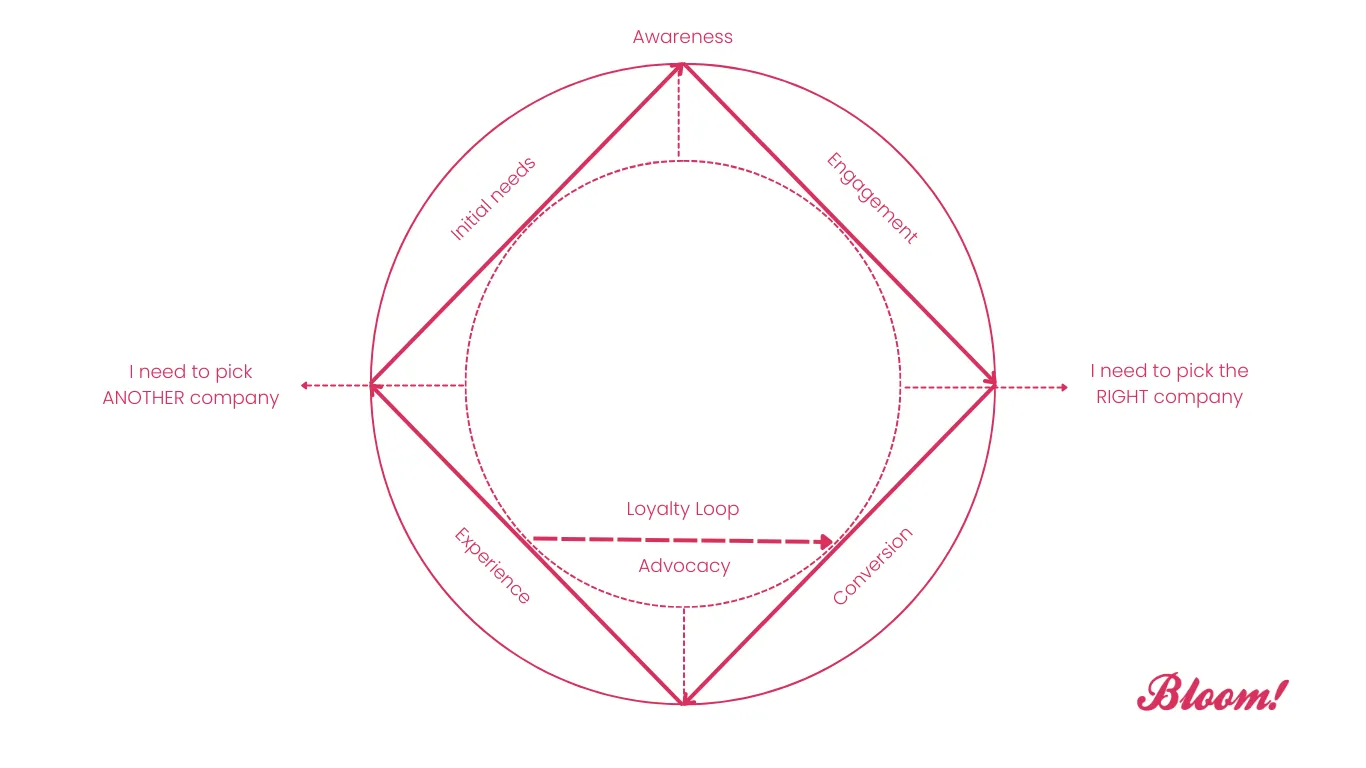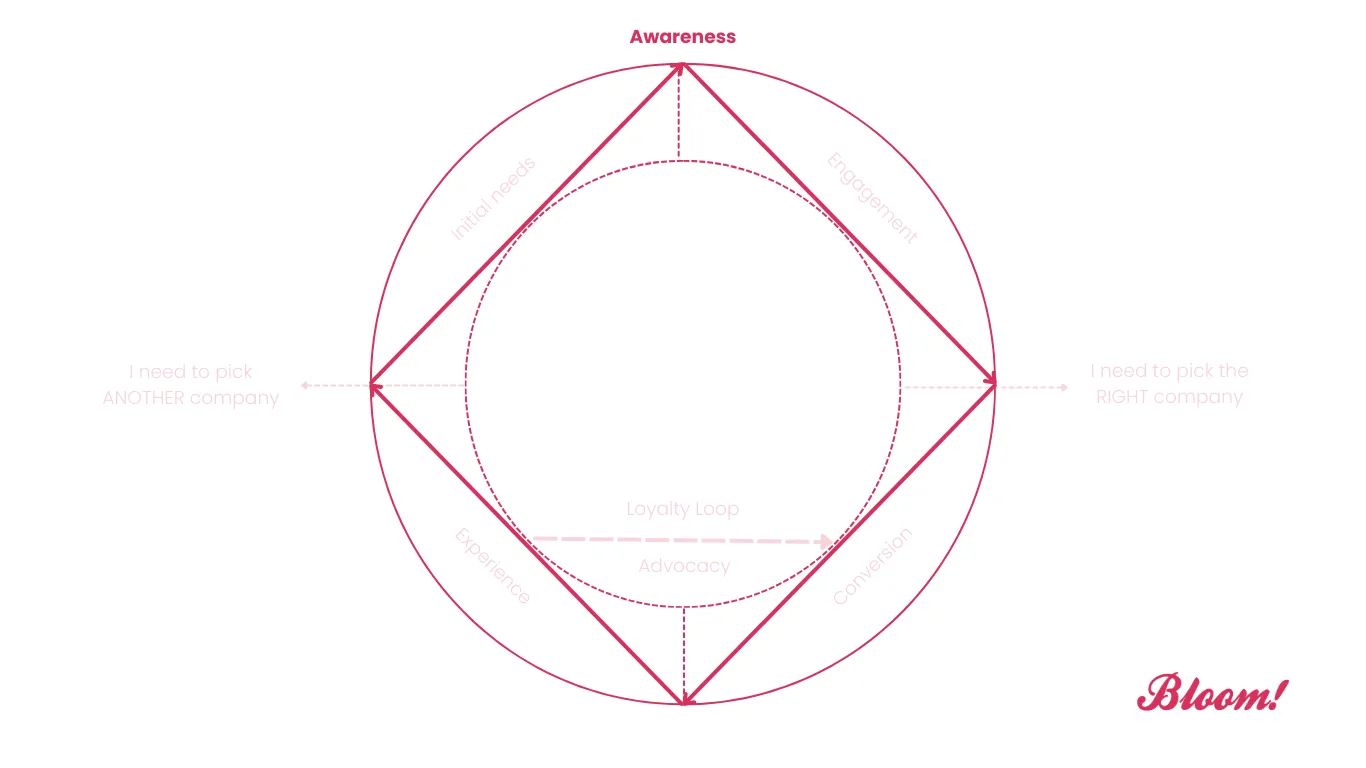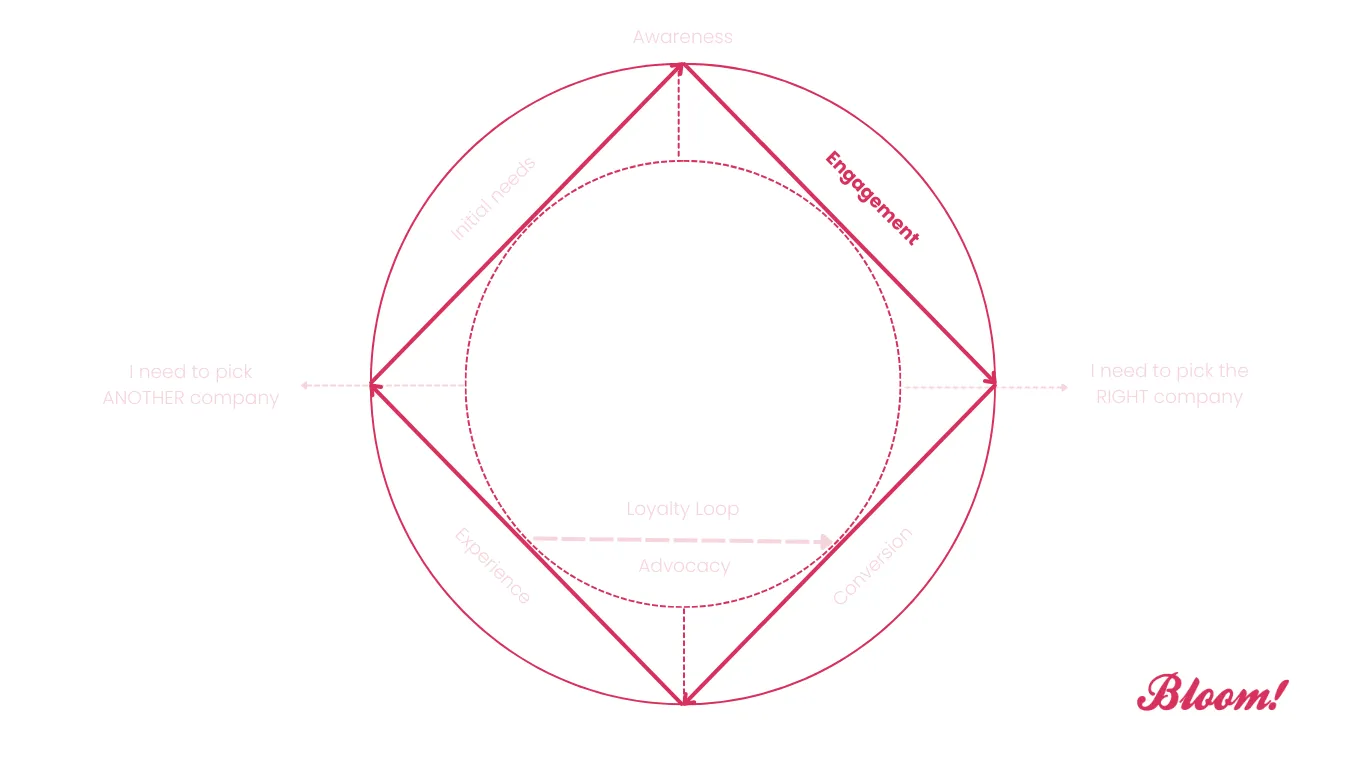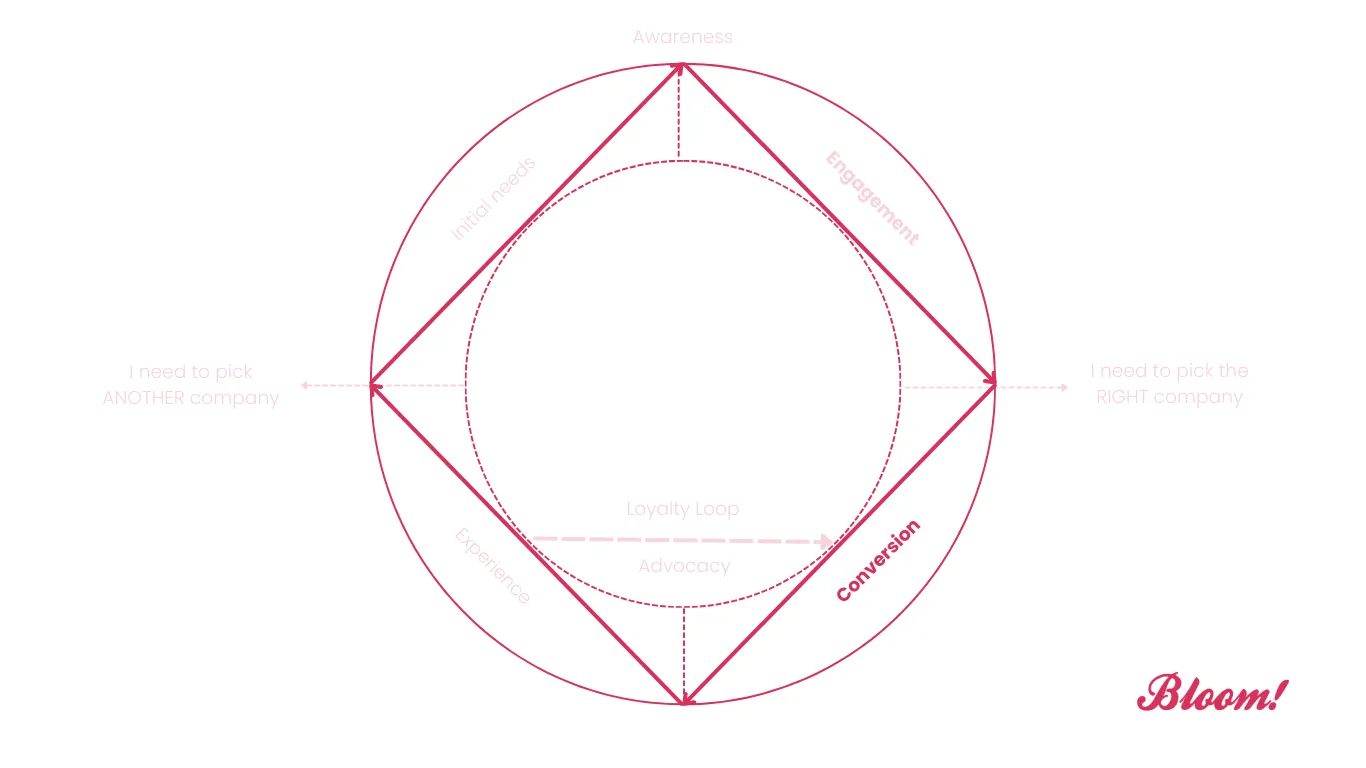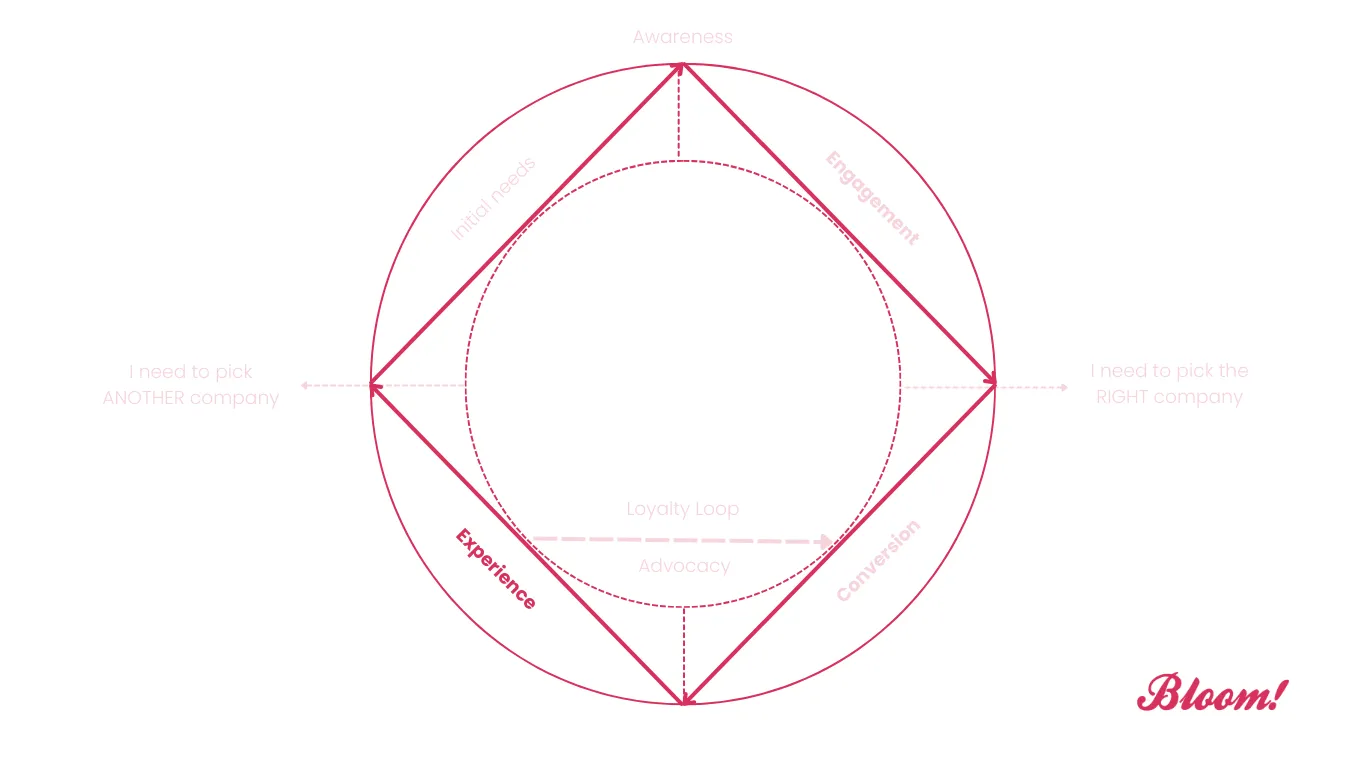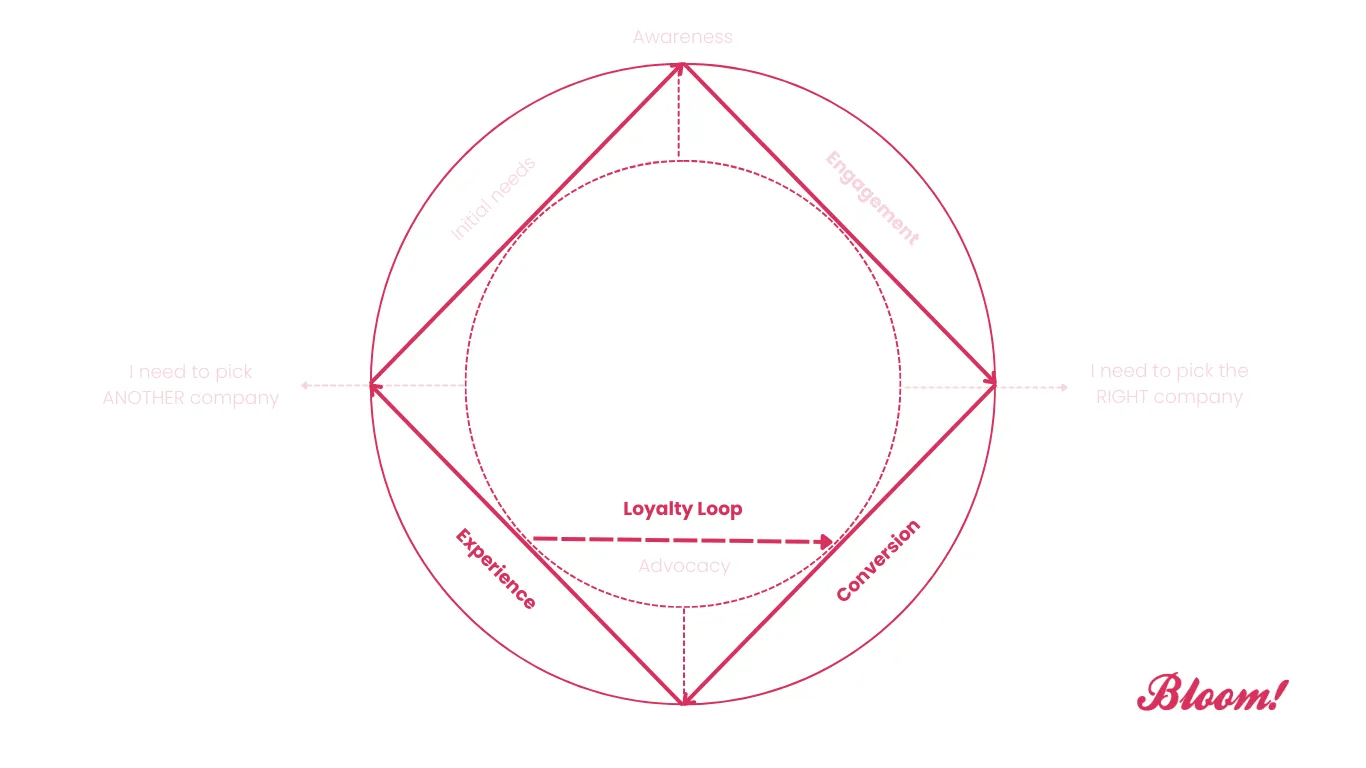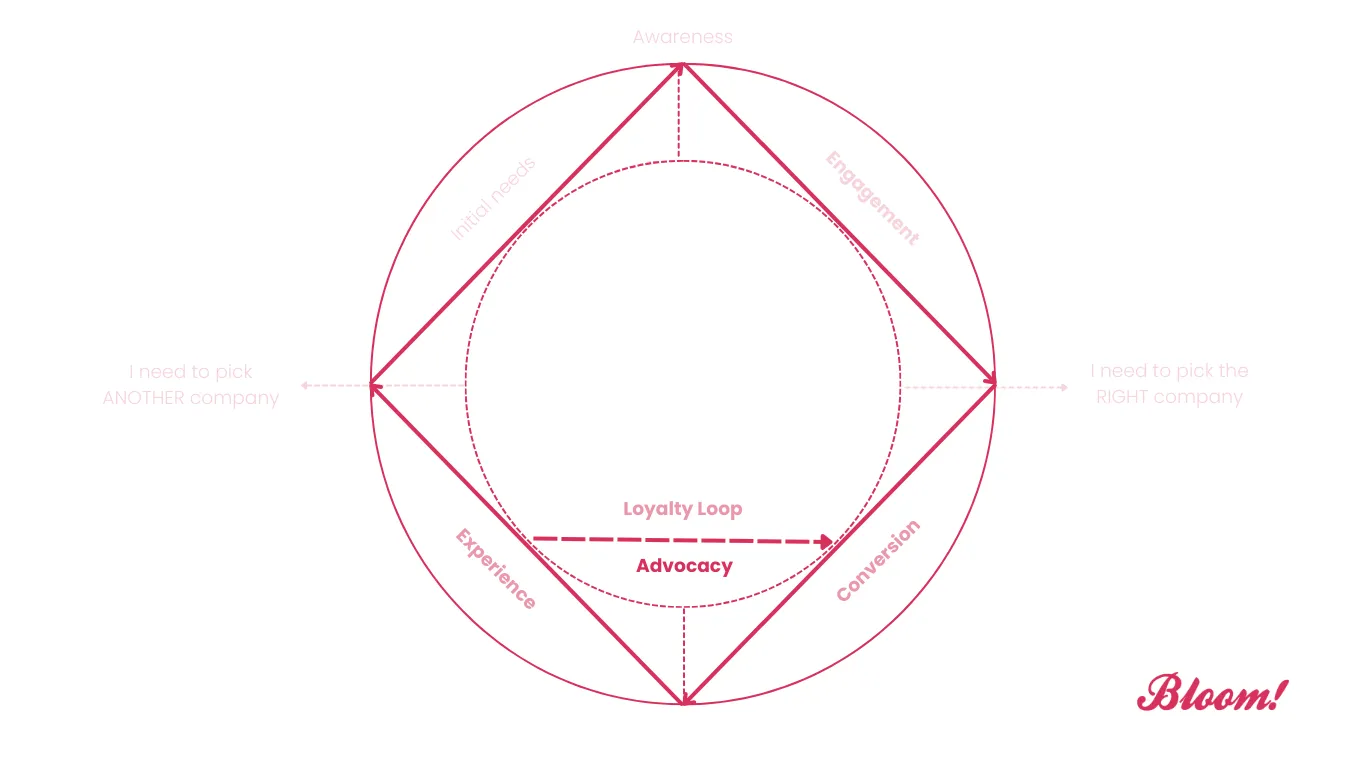Highlights
- The Customer Value Journey is a roadmap that enhances our inbound marketing strategies by building authentic and meaningful customer relationships, turning them into our biggest fans and advocates. It consists of six key steps: Awareness, Engagement, Conversion, Experience, Loyalty Loop, and Advocacy, each utilizing unique Digital Marketing tactics like Digital Advertising, Content Marketing, and Email Marketing to nurture and guide customers through the sales funnel.
- This approach attracts prospects and nurtures them into loyal customers excited to advocate for the brand. Centered around fostering meaningful relationships, this strategy leads to sustainable growth, enhanced customer loyalty, and a robust bottom line, highlighting the long-term benefits of a customer-centric inbound marketing strategy.
In today’s business landscape, building genuine relationships with customers is the gateway to success, and for business owners, embracing the “Customer Value Journey” presents a straightforward yet potent inbound marketing strategy to realize this goal.
Imagine Inbound Marketing not as a one-off effort but as a friendly journey where every step you take with your customers helps them feel more connected to your business.
Customer Value Journey Steps
Imagine it as a roadmap, guiding your customers from the point they discover your business to the stage where they become your biggest fans. It’s a six-step journey about creating valuable interactions that feel personalized and engaging, not pushy.
This inbound marketing strategy enhances the customer experience by adding value to every content piece and interaction.
This article breaks down this journey into simple, actionable steps, showing how to apply this approach to your inbound marketing efforts. Understanding and utilizing the Customer Value Journey will set your business toward lasting success and a community of customers excited to champion your brand.
Now, let’s explore these six steps.
Step 1: Awareness
It’s the stage where your future client becomes aware of your brand, much like how people become aware of major players like Google or Microsoft.
For example:
- An IT company owner sees a LinkedIn advertisement for a new Inbound Marketing Agency (sounds familiar, huh?);
- A startup CEO searches Google and finds an article about a new project management tool.
To generate awareness, we use the following Inbound Marketing Tactics:
- Digital Advertising;
- Search Marketing;
- Content Marketing;
- Social Media Marketing.
Step 2: Engagement
This is where relationships begin, through engaging content that provides value, entertainment, information, and so on.
For example:
- The owner of a car parts store becomes active in a Facebook community for other retailers;
- An entrepreneur watches a YouTube video from ManyChat showing him how to use chatbots to get a higher open rate.
To create engagement, we use the following Inbound Marketing Tactics:
- Content Marketing;
- Email Marketing;
- Social Media Marketing.
Understanding the customer value journey is key for IT companies striving to maximize their market impact. A key aspect of this journey is leveraging the immense Benefits of Digital Marketing for IT Companies. Effective digital marketing strategies enhance brand visibility and drive meaningful engagement with your target audience. It’s about creating a narrative that resonates with your clients, showcasing your technical prowess, and transforming complex IT solutions into relatable, client-centered stories. This approach can significantly elevate your company’s online presence, strengthening customer relationships and sustaining business growth.
Step 3: Conversion
It’s where you acquire clients or raise the engagement level of your current leads.
For example:
- Someone purchased a cup of coffee and a cupcake at the coffee shop;
- Business owner hires an Inbound Marketing Agency to enhance online visibility, boost customer engagement, and increase conversions.
To generate conversions, we use the following Inbound Marketing Tactics:
- Content Marketing;
- Copywriting;
- Email Marketing;
- Search Marketing.
Step 4: Experience
It’s about creating offerings that attract clients and encourage repeat business, ensuring customers derive value from each transaction.
For example:
- An onboarding campaign, which helps customers understand your product or service better;
- Free post-purchase support or next-purchase discount.
To create excitement, we use the following Inbound Marketing Tactics:
- Email Marketing;
- Content Marketing;
- Copywriting.
Step 5: Loyalty Loop
It’s where your clients will be ready to purchase more often.
For example:
- A man rents a car and pays extra for an extended support package;
- A couple buys a Netflix subscription for $119.88 annually instead of monthly payments.
To create ascension, we use the following Inbound Marketing Tactics:
- Email Marketing;
- Content Marketing;
- Copywriting.
Step 6: Advocacy
It’s where your loyal clients are ready to advocate for you.
For example:
- A girl takes part in a contest to win a new Apple iPad from a coffee shop by uploading a video review telling how much she loves their coffee and cupcakes;
- The VP of Marketing writes a detailed evaluation of the Inbound Marketing Agency he uses in small marketing projects.
To generate advocates, we use the following Inbound Marketing Tactics:
- Search Marketing;
- Email marketing;
- Social Media Marketing.
Conclusion
Inbound Marketing is not just a strategy; it’s a philosophy centered around fostering meaningful relationships with customers at every phase of their journey. By understanding and implementing the Customer Value Journey Map, businesses can transition from merely pushing products to creating a value-driven narrative that resonates with customers.
Implementing the tactics discussed in this article can help you create a holistic Inbound Marketing Strategy that attracts prospects and nurtures them into loyal customers excited to share your brand with the world. By embracing this customer-centric approach, you invest in sustainable growth and a community of advocates who will propel your business forward in the long term.
Engaging a skilled digital marketing agency can simplify your journey in connecting with customers. Such agencies help create strategies that match each stage of your customer’s journey with your business. They help create engaging content and build genuine relationships with your audience, making the journey from a potential to a loyal customer smoother and more effective for your business.
This journey towards a successful inbound marketing strategy may require a shift in perspective. Still, the results—enhanced customer loyalty, improved reputation, and a robust bottom line—are worth the effort.
FAQ
How can I measure the effectiveness of each stage of the Customer Value Journey?
The Customer Value Journey (CVJ) involves several stages, and measuring their effectiveness is crucial for optimizing your marketing efforts. Here’s how:
- Awareness: Track metrics like website visits, social media reach, and brand mentions. Use tools like Google Analytics or social media analytics to assess awareness growth.
- Engagement: Monitor engagement metrics such as time spent on your website, interaction with content (likes, shares, comments), and email open rates.
- Subscription: Measure the conversion rate from visitors to subscribers (e.g., newsletter sign-ups and app downloads).
- Conversion: Evaluate conversion rates for specific actions (e.g., form submissions, purchases). Understand which touchpoints contribute most to conversions.
- Excitement: Assess customer satisfaction, Net Promoter Score (NPS), and post-purchase engagement.
- Growth: Track customer lifetime value (CLV), repeat purchases, and upsells.
- Advocate: Measure customer referrals, reviews, and testimonials.
- Promote: Analyze the impact of customer advocacy on new customer acquisition.
How can I customize the Customer Value Journey to fit my business goals and audience needs?
- Segmentation: Tailor each stage based on audience segments (e.g., new customers, existing clients, high-value prospects).
- Content Personalization: Create relevant content for different stages – educational content for awareness, case studies for conversion, and loyalty programs for growth.
- Touchpoint Optimization: Optimize touchpoints (website, social media, emails) to align with audience preferences and behaviors.
- Feedback Loop: Continuously gather feedback from customers to refine the journey. Use surveys, reviews, and direct interactions.
- Iterate and Test: Regularly review and adjust your CVJ based on performance data. A/B tests different approaches to find what resonates best.
Why is the Customer Value Journey important in marketing?
Understanding the Customer Value Journey is vital for crafting marketing strategies that align with customer needs and preferences, leading to higher engagement, conversion, and retention rates.
How can businesses implement the Customer Value Journey?
Businesses can implement the Customer Value Journey by analyzing each stage – from awareness to advocacy – and creating targeted strategies that engage customers at every point, enhancing their overall experience.
What are the critical stages of the Customer Value Journey?
The key stages include awareness, engagement, subscription, conversion, excitement, ascension, and advocacy, each playing a crucial role in turning prospects into loyal customers.
Can the Customer Value Journey be applied to all types of businesses?
The Customer Value Journey is a versatile framework that can be tailored to fit various business models and industries, making it a universal tool for customer-centric marketing.

